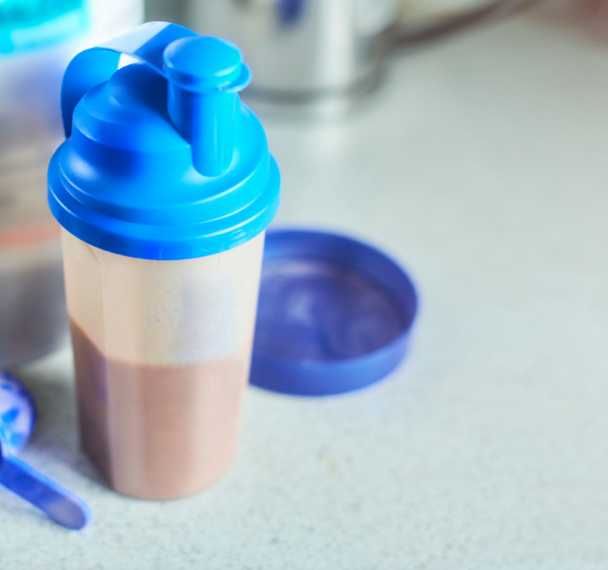Nutrition & Health Claims UK: What Food Business Owners Can Actually Say (And What Will Get You in Trouble)
Aug 04, 2025
Stop making costly mistakes with your product labelling. Learn exactly what you can and can't claim about your food or drink products.
Starting a food or drink business is exciting, but navigating nutrition and health claims can feel overwhelming. You want to showcase your product's benefits—whether it's packed with lion's mane mushroom, ashwagandha, or turmeric—but what can you actually say on your label without breaking the law?
This comprehensive guide breaks down everything you need to know about nutrition and health claims to help you market your products effectively while staying compliant.
What Are Nutrition Claims vs. Health Claims?
Understanding the difference between these two types of claims is crucial for your food or drink business:
Nutrition Claims
Nutrition claims describe the positive nutritional impact of your food or drink based on specific nutrient quantities. These are straightforward statements about what's in your product:
- "High in protein"
- "Low in fat"
- "Source of calcium"
- "No added sugar"
The key here is precision. You can't just decide your product is "high in protein"—it must meet specific calculated requirements for each term you use.
Health Claims
Health claims go further by explaining how a nutrient benefits our health. These require much more scientific backing and are harder to prove:
- "Vitamin A contributes to the normal function of the immune system"
- "Magnesium contributes to the reduction of tiredness and fatigue"
Health claims must be supported by substantial scientific data, approved by regulatory bodies, and based on specific nutrient quantities.
Where to Find Approved Claims for Your F&D Business
UK Nutrition and Health Claims Register
Since Brexit, the UK has its own approval system through the UK Nutrition and Health Claims Committee (UKNHCC). You can find all approved claims in the Great Britain Nutrition and Health Claims Register.
Important tip: The register contains both approved and non-approved claims. Always filter to show only "authorised" claims to avoid using outdated or rejected statements.
These claims often work together—a health claim typically requires meeting specific nutritional claim requirements.
The "On Hold" Claims Dilemma
This is where things get tricky for food businesses. "On Hold" claims exist in a regulatory grey area that can be tempting but dangerous for your business.
What Are "On Hold" Claims?
These are claims that haven't been approved or rejected—they're stuck in regulatory limbo. You'll find most functional ingredients here, for example:
- Ashwagandha
- Caffeine
- Amino acids
- Yerba Mate extract
- Aloe Vera
Why They're Risky for Your Business
While technically legal to use, "on hold" claims present several problems:
- No quantity guidelines: You don't know how much of an ingredient you need to include
- Poor wording: Many claims use vague, misleading language like "massively increases" or "boosts longevity"
- Regulatory uncertainty: The government could reject these claims at any time
- Lack of scientific backing: You'll need to provide your own research if challenged
Professional advice: Stay away from "on hold" claims unless you have substantial scientific literature to back them up and legal counsel to review your usage.
Six Essential Rules for Using Claims
1. No Medical Claims
Never suggest your product prevents, treats, or cures diseases. You also can't reference specific weight loss amounts.
2. Include Balanced Diet Statements
Always remind consumers that your product is part of a varied, balanced diet and healthy lifestyle—not a magic solution.
3. Add Safety Warnings
Include statements about potential health risks from overconsumption and identify who should avoid your product (e.g. pregnant women, people with specific conditions).
4. No Claims on High-Alcohol Products
You can't make health claims on alcoholic beverages with more than 1.2% ABV.
5. Calculate for Final Product
Base all calculations on the ready-to-consume product, not individual ingredients before preparation.
6. Stay Truthful in Wording
You can slightly modify claim wording, but never make it false, exaggerated, or misleading. Build trust, don't oversell.
Lab Testing: Your Safety Net
Even with perfect calculations, always test your products in a laboratory, especially across their shelf life. Here's why:
- Ingredients interact with each other and packaging over time
- Storage conditions affect nutrient levels
- Consumers buying at the end of shelf life should get the same benefits as those buying fresh
Consider "overages"—adding slightly more nutrients at the start so you meet claims throughout the product's life. It's better to have a little more than promised rather than less.
Labelling Requirements You Can't Ignore
If you make nutrition or health claims, you must:
- Include the nutrient in your nutrition table
- List the substance name and quantity
- Show percentage of daily recommended intake (RI) for vitamins and minerals
- Display the same information on your website as on your packaging
Critical mistake to avoid: Many businesses don't include ingredient lists and nutritional information on their websites. This is a legal requirement and affects customer trust and purchasing decisions.
Common Mistakes That Cost Businesses Money
Using Trendy But Illegal Terms
Words like "focus," "boost," and "superfood" aren't found in approved health claims. Using them could trigger regulatory action.
Relying on Marketing Hype
Just because an ingredient is trending doesn't mean you can make specific claims about it. Always check the official registers first.
Skipping Professional Guidance
The complexity of nutrition and health claims makes professional consultation essential. The cost of getting it wrong far exceeds the cost of getting it right.
Building Consumer Trust Through Compliance
Your claims should enhance consumer confidence, not create unrealistic expectations. Focus on:
- Using precise, approved language
- Providing complete nutritional information
- Being transparent about ingredients and quantities
- Positioning your product as part of a healthy lifestyle
Next Steps for Your Business
- Research thoroughly: Check the official UK register for approved claims relevant to your ingredients
- Calculate precisely: Ensure your product meets the specific requirements for any claims you want to make
- Test professionally: Use accredited laboratories to verify your claims across shelf life
- Label correctly: Include all required information on both packaging and website
- Stay updated: Regulations change, so regularly review your claims for compliance
The Bottom Line
Nutrition and health claims can be powerful marketing tools, but they require careful attention to regulatory requirements. The investment in getting them right—through proper research, testing, and professional guidance—protects your business from costly mistakes and builds the consumer trust that drives long-term success.
Remember: it's better to make fewer, accurate claims than to risk your business with non-compliant statements that could damage your reputation.
Struggling with product development challenges? As a food and drink consultant with over a decade of industry experience, I help established businesses perfect their flavour profiles, streamline product development, and unlock the path to retailer listings.
Look at my Food Legislation Audit services and get in touch to discuss how we can transform your products and boost those customer reviews.
Useful links
Great Britain Nutrition and health claims (NHC) register
Great Britain ‘On hold’ health claims







